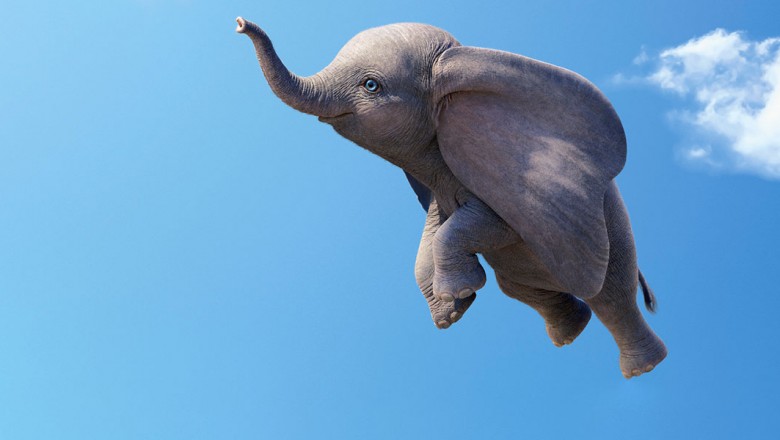By Beth Deitchman
More than 70 years ago, Mrs. Jumbo looked down at her “baby mine” for the very first time and, after one look at his expressive blue eyes, she was smitten—and so were we. Dumbo, the 1941 animated feature, has been a fan-favorite since its release, largely because of its adorable elephant protagonist who captivated us with his oversized ears and his equally estimable heart—both of which enabled him to soar (with or without a feather). Dumbo flies into theaters again this Friday, March 29, in Disney’s new live-action adventure starring Colin Farrell, Danny DeVito, Michael Keaton, and Eva Green—along with a fully CG elephant that’s been created with innovative technology that also harks back to the character’s hand-drawn history. Dumbo’s visual effects supervisor, Richard Stammers, shared these fun facts from under the big top.
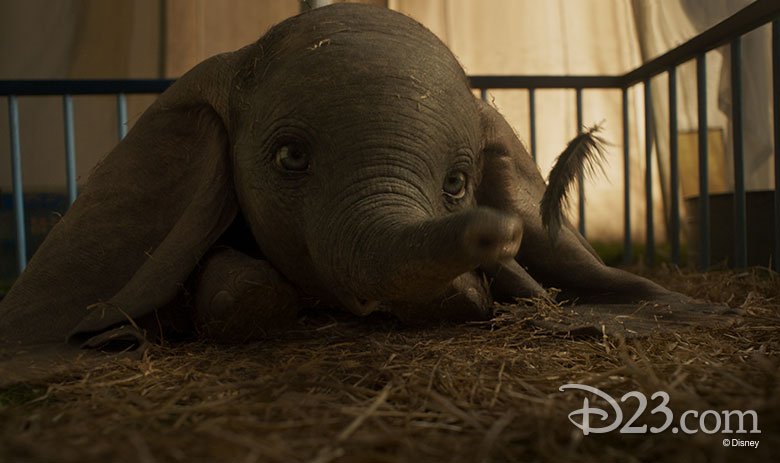
An elephant with enormous ears that serve as wings needs a head that’s big enough to hold them.
Dumbo’s most adorable physical characteristics serve very practical purposes, explained Stammers, who emphasized that Dumbo’s eyes were a vital part of the character animation and expression. “Without speaking at all, the eyes are the window to the soul,” he said. “It was very important to be able to read those emotions through his eyes, and that was something that was really important in the original cartoon, just the way the eyes were looking with the head down and the eyes up. That kind of subtlety was such an important part of reading him as a character.”
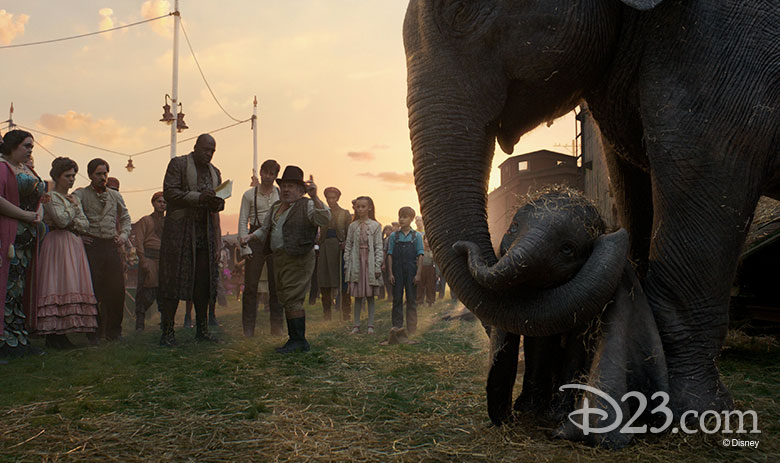
The VFX team wanted to be true to the animated character, but first and foremost, was determined to be true to real elephants.
Stammers and his team visited zoos in the U.K. to study how real elephants behave, to inform their creation of Dumbo, Mrs. Jumbo, and the other elephants in Medici Bros. circus. Using multiple cameras, they filmed real elephants from a variety of angles in order to build a library of references that would aid in the character animation. “We looked at everything, like the way the trunk moves or the tail swishes or the weight gets transferred from one leg to the other just when they’re standing still,” Stammers details.
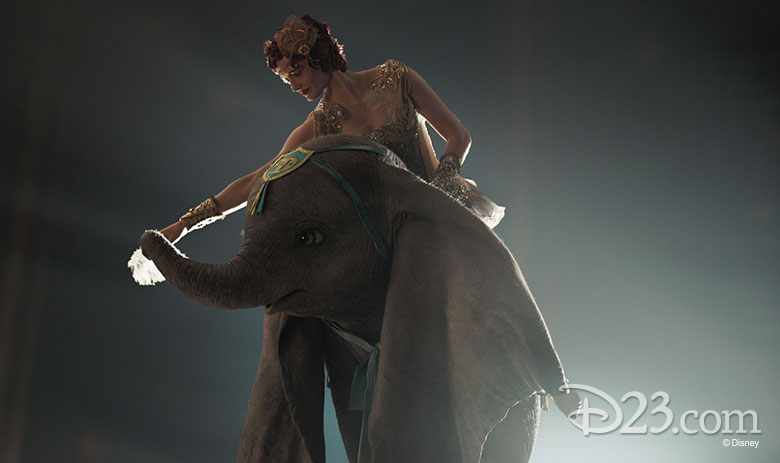
It takes much more than a feather to make an elephant fly.
While real elephants were an excellent resource for how Dumbo would appear on solid ground, Stammers and his team had to get creative when it came to determining the aerodynamics of an elephant in flight. “There’s a matter of suspension of disbelief in getting a 90-kilo elephant off the ground,” Stammers shares. His team looked at large birds in flight, but found it more helpful to study the wing dynamics of butterflies, along with the underwater movements of manta rays. “They have a really soft, thin sort of wings, and the way that they sort of flap on the edges were helpful to us, as well,” Stammers explains. The VFX team was also determined to realistically illustrate the effort Dumbo needed in order to become airborne. Stammers points out, “Whenever you see him flapping, it’s always a lot of head bobbing to show that the head and neck are doing a lot of work moving independently of his body. And his legs are almost galloping, almost like he’s climbing steps in a sort of galloping motion.”
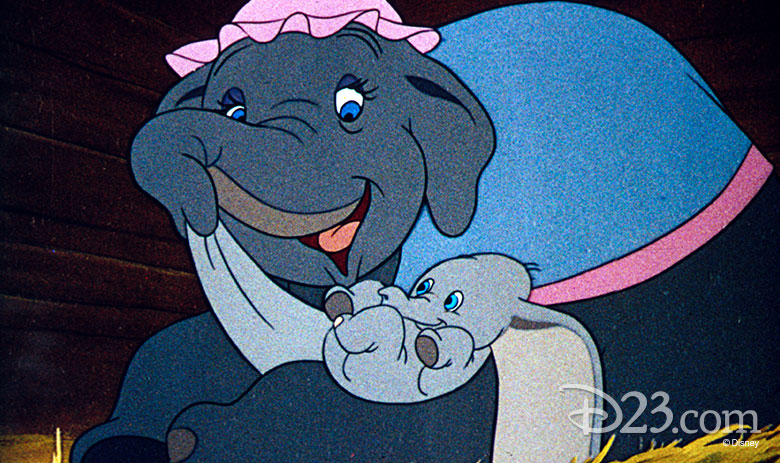
The original animation served as inspiration throughout the VFX process.
Stammers’ team kept Dumbo’s proportions from the 1941 film, from his oversized head to his short stubby legs, and they returned to many of the character poses that appeared in the original cartoon. “When we started posing our CG version of Dumbo, we would look back at the cartoon and see how things were done in the original,” Stammers explains. The elephants’ body language is frequently inspired by the 1941 film, from the way Dumbo sits to the way Mrs. Jumbo extends her trunk for a motherly embrace.

The team tackled an interesting challenge head-on.
In real life, elephants aren’t necessarily the most expressive creatures, Stammers notes. “Their heads are often hung very low and their eyes are often looking at the ground.” The VFX team needed to keep Dumbo’s head up to maintain a sightline with the other characters (and, of course, to focus on those inimitable blue eyes). The team also pushed technology to devise a new way to render and create skin for Dumbo and the elephants, so that when the pachyderms move realistically, their wrinkles do, as well. Stammers shares, “We had to make sure that all the wrinkles and the little hairs and the eyelashes and even the eyelids all seemed as realistic as possible so that each part of him—even despite his unusual design—would still feel as real as possible.”
You can see Dumbo take flight this Friday, in a theater near you. And take it from us, you haven’t seen anything until you’ve seen this elephant fly!



